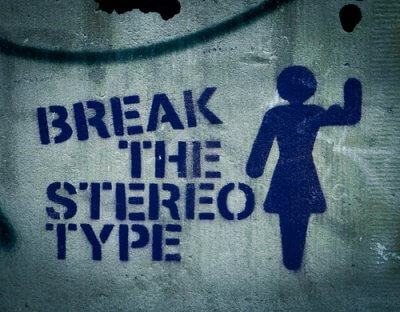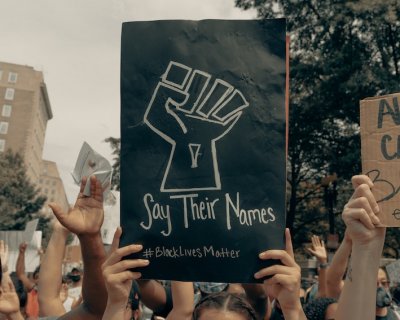Stereotypes – Why We Make Them and How to Stop

By: jennifer wu
By Andrea M. Darcy
It’s easy to assume that stereotypes are ‘over there’. Something that ‘ignorant’ and ‘bad’ people are doing, not us. But if we look at it from a psychological angle, the truth is not that simple.
What is a stereotype?
When we stereotype, we paint an entire group of people with the same brush. And it’s a brush coated with assumptions, things we decide are facts based on limited information.
Stereotypes are not always a bad thing, and yes, we ALL make them. A way to process and categorise information, they are part of our brain’s design to help us understand a complicated world that goes quickly.
And sometimes stereotypes are useful or even correct. A flying insect might bite, for example, or a person holding a weapon is best avoided.
But when it comes to people, stereotypes often lead to first prejudice, and then discrimination.
Stereotypes, prejudice, and discrimination
Sometimes the terms stereotype, prejudice, and discrimination are used interchangeably. But they are distinct, stand-alone processes, although they often work in a three-step process.
The stereotype is the thinking step, or ‘cognitive bias’. We mentally categorise others based on very little evidence, then we feel an emotion.

By: Leon Riskin
Prejudice is the emotional step, or ’emotional bias’. We feel angry or threatened by our own assumption, or proud and outraged. And decide we have to do something about it. So we develop negative preconceptions based on racial, ethnic, gender, or social affiliations.
Which leads to the action step of discrimination, or ‘behavioural bias’. We treat others differently based on our prejudice.
The different types of stereotypes
“But I didn’t stereotype, at the time I just didn’t know any better.” Psychologists would say you did stereotype, but are guilty of what is known as ‘implicit stereotyping’.
Implicit stereotypes are unconscious ones. They can be harder to spot, particularly if they are something that everyone around us thinks, or we grew up being taught. “Women are made to be mothers” is something that has only recently been questioned, but still runs deeply through society. If we dare explore, we might find that deep down we still hold this as true.
Explicit stereotypes are ones we know we are making. Not that it means we stop being biased. We often underestimate just how biased we really are.
So we might, for example, say, “I know it’s biased, but I think most men are lazy given half a chance.” The bias might run further. We might also feel most men are dangerous and predators.
Why do we stereotype?
Again, our brain is designed to organise information. And it is also driven by social motivation — determining whether to bond or compete with others pending what it thinks will make life easier. This arises from our cave man days, when we needed groups to survive. In this way stereotypes are connected to the survival mechanisms of our brain.
But our brains also engage in self-regulatory processes. We develop personal beliefs and we follow social norms to act in a positive, intentional manner and control our thinking.
So our brains are not designed to be prejudiced or racist. Our brains are rather taught to be so. As an in-depth paper called “the Neuroscience of Prejudice and Stereotyping” points out, it’s a “learned threat response to racial out-groups, which is ostensibly rooted in fear conditioning.”
In a study of white Americans viewing images of black American’s faces, it was found that the amygdala, the part of the brain connected to our fear response, had a greater activation when looking at darker rather than lighter skin tone. And this was “when judgements of faces are made on the basis of superficial information”.
Are some of us more likely to stereotype than others?
“Social dominance orientation”, or SDO for short, is a personality trait that is sometimes used to ‘explain’ racism and sexism.
The idea here is that some of us are born with brains more designed to prefer hierarchies within social systems, and more likely to divide people by status. People with SDO tend to be dominant and driven, believe in ‘hard work’, and seek power.
While it’s convenient to blame things like racism and corrupt policing on SDO, other researchers have pointed out that it’s not correct. SDO is actually more about believing there are limited resources.
When a study gave students information about a made-up group of immigrants, it showed that the students were more likely to be prejudiced if they were told the immigrants were socially competitive. When the immigrants were described not as a threat but as morally deviant, even though this was a worse attribute to have, the students were less likely to be biased against the fictional immigrants.
How to stop stereotyping others
So what can we learn from the above information and research when it comes to facing our own tendencies to stereotype?
1. Question your fear response.

photo by Clay Banks
If you feel fear around someone you don’t know, take note. Is it a learned fear? What assumptions are you making because of that fear? Are these assumptions useful, or are they learned bias? Where might you have learned this response?
2. Make it personal.
Remember, stereotyping paints a group of people as all the same.
Break this thinking habit by noticing when you speak about people in generalities and where possible focussing on the individual. It’s not ‘the black guy who works at the shop on the corner’. It’s Michael, the shop owner, who is a father and likes cricket.
3. Learn mindfulness.
To change how we think, we need to know how we think. Mindfulness is an easy-to-learn tool that teaches you to be aware of your thoughts and feelings and you can learn it now with our free “Guide to Mindfulness“.
Notice if your thoughts presuppose that the person you are developing bias against is in competition with you (aka, you are engaging in SDO). Do you feel that your social or economic resources are threatened? Is this even true? Are resources as limited as you are telling yourself they are? And even if they were, it is a valid reason to make a negative assumption about the other person?
4. Volunteer.
If you suspect you might be high on the social dominance scale, then this is particularly important. Research shows that those high on SDO are lower than average with empathy and community orientation levels. Volunteering helps.
In a 2017 survey of over 1500 students at the London School of Economics, 74.5% of students who had engaged in volunteering reported a greater understanding of others.
5. Work on your self-compassion.
How could focussing on yourself help you stop stereotyping others? Compassion-focused therapy believes we can more easily have compassion and understanding for others if we actually have self-compassion for ourselves first.
Feel caught up in constant rage and negative thinking towards others, and want it to stop? We connect you with top London talk therapists who can help. Or use our online platform to find a UK-wide registered therapist or online counsellor now.
Still have a question about what is stereotypes and how you can get yours under control? Or want to share a tip for other readers? Use the comment box below.
 Andrea M. Darcy is the lead writer of this site. Trained in person centred counselling and coaching, she formerly made a living as a screenwriter. Find her @am_darcy
Andrea M. Darcy is the lead writer of this site. Trained in person centred counselling and coaching, she formerly made a living as a screenwriter. Find her @am_darcy




